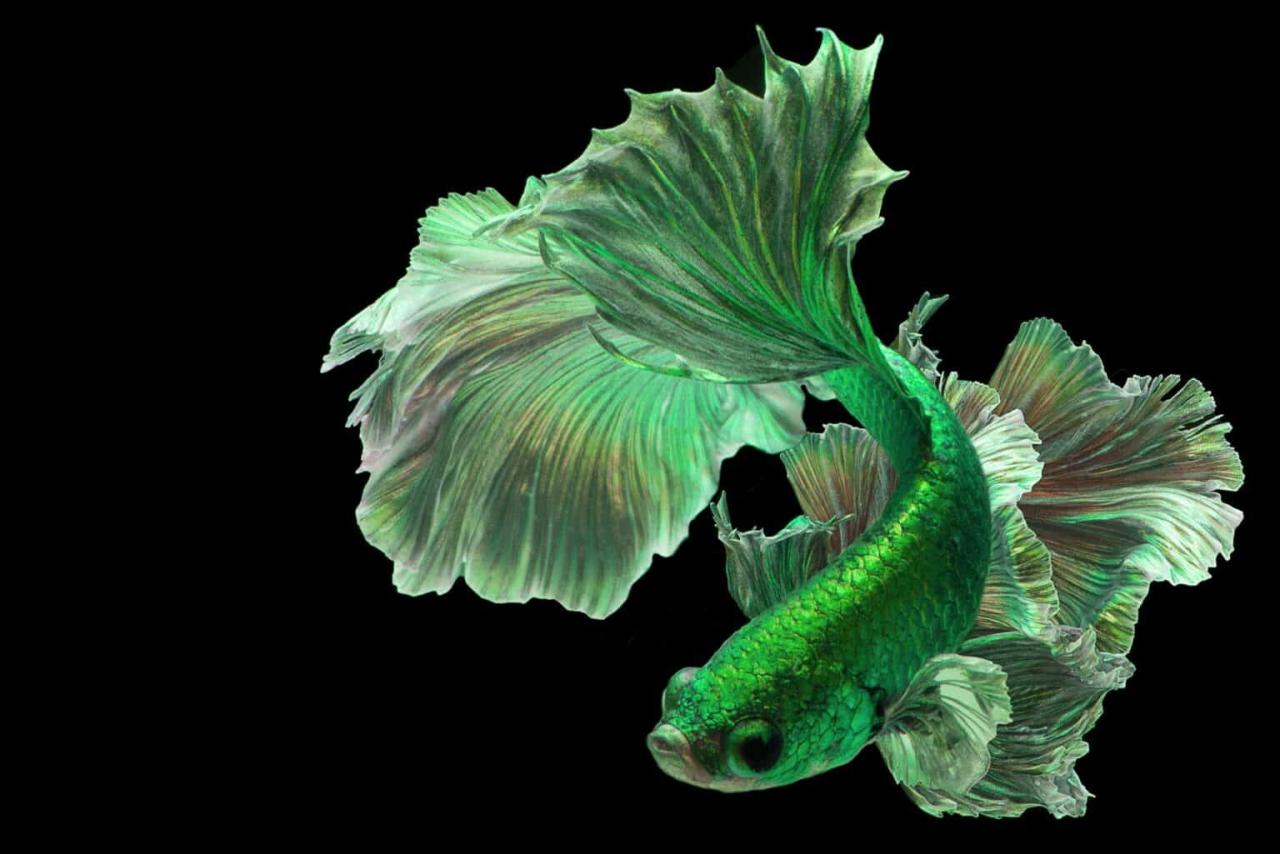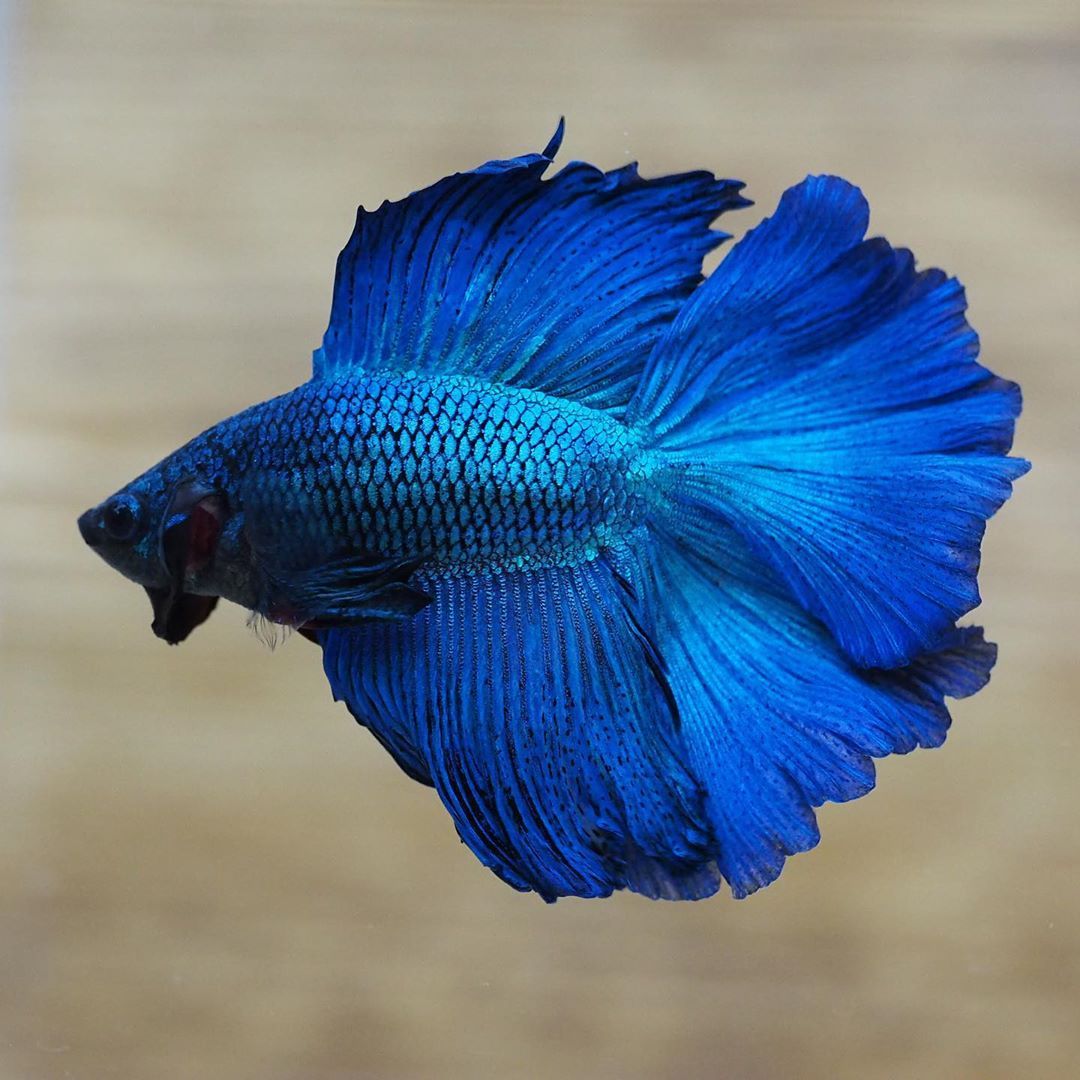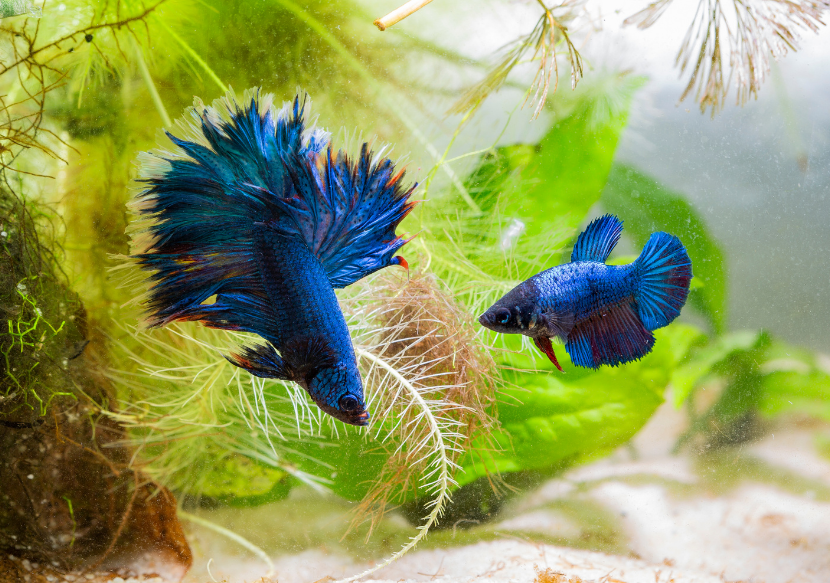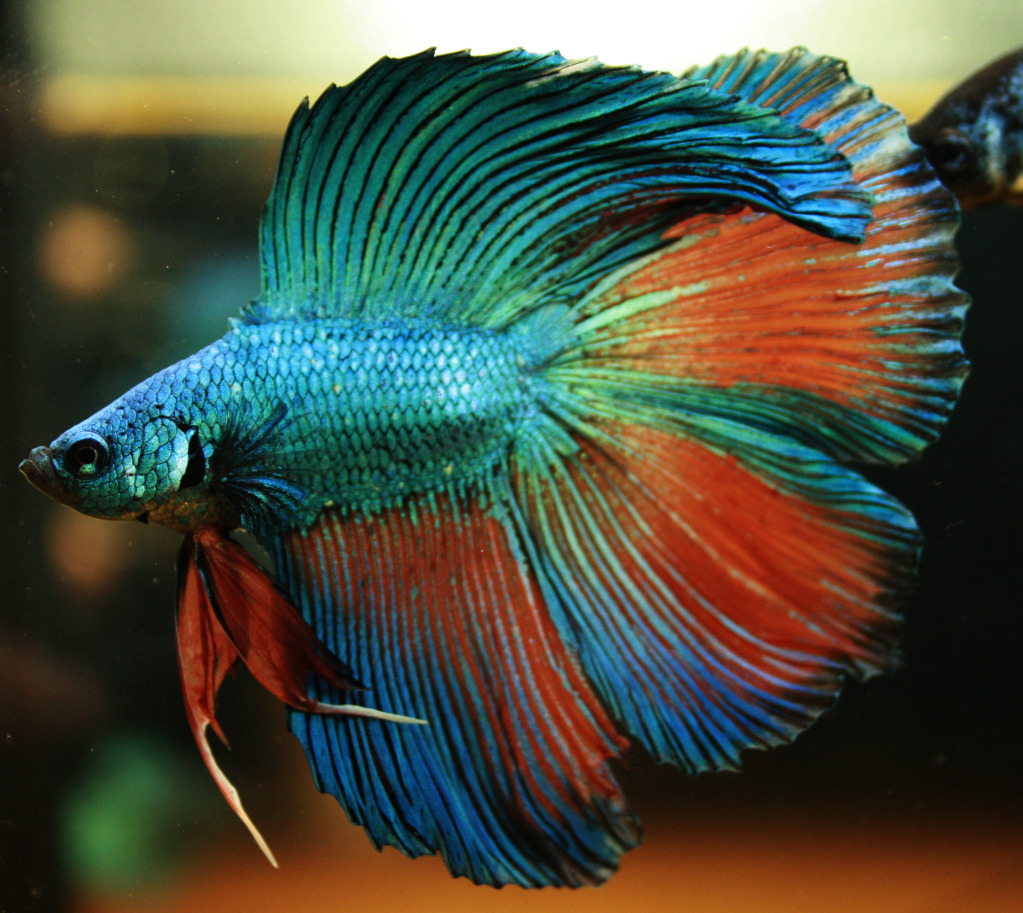Breeding betta fish, also known as Siamese fighting fish, can be a rewarding experience for both novice and experienced aquarists. These vibrant and captivating fish possess unique characteristics and require careful attention to thrive. This comprehensive guide will walk you through every stage of the breeding process, from initial preparation to the care of the fry.
Proper preparation is key to success. Understanding the needs of betta fish, selecting compatible pairs, and establishing a suitable breeding environment are essential steps. This guide delves into each aspect, providing practical advice and detailed information. You will gain insights into water parameters, tank setup, and the crucial selection of healthy and compatible fish for breeding.
Introduction to Betta Fish Breeding

Betta fish, renowned for their vibrant colors and captivating fins, are popular aquarium pets. Breeding these beautiful fish can be a rewarding experience, allowing enthusiasts to witness the fascinating process of reproduction and nurture a new generation of these enchanting creatures. However, successful betta breeding requires careful planning and execution. This section provides essential information to navigate the complexities of betta fish reproduction.Proper preparation is fundamental to achieving successful betta breeding.
It ensures the well-being of the parent fish and optimizes the chances of healthy offspring. This includes understanding the fish’s specific needs, establishing a conducive environment, and selecting suitable breeding pairs. This careful preparation minimizes stress on the fish and increases the likelihood of a successful breeding outcome.
Choosing Compatible Betta Fish
Selecting appropriate betta fish for breeding is crucial for a positive breeding outcome. Compatibility is paramount, as certain pairings might lead to aggression or incompatibility issues, negatively impacting the breeding process. Consider the physical attributes, temperament, and potential breeding behaviors of the selected fish. Carefully observing the fish’s interactions and behaviors before initiating breeding can help predict the outcome and ensure a harmonious breeding environment.
Basic Equipment and Supplies
The necessary equipment for betta fish breeding facilitates a healthy and optimal environment for the fish. Adequate equipment is vital to support the fish’s needs and contribute to successful breeding. This involves providing appropriate housing, maintaining suitable water conditions, and offering stimulating surroundings.
| Equipment | Function |
|---|---|
| Tank | Provides housing for the fish, accommodating the breeding pair and any potential offspring. The tank size should be suitable for the species and the anticipated number of fish. |
| Heater | Maintains the optimal water temperature for betta fish, ensuring their well-being and facilitating the breeding process. Betta fish thrive in a specific temperature range, and maintaining this range is critical for successful breeding. |
| Filter | Maintains water quality by removing impurities and promoting water circulation. This aspect is vital for the fish’s health and for the overall success of the breeding process. |
| Gravel/Substrate | Provides decoration and a substrate for breeding, mimicking natural habitats. The substrate can also provide cover and hiding places for the fish. |
Setting Up the Breeding Environment

Creating a suitable environment is crucial for successful betta fish breeding. A well-designed tank mimics the natural conditions of the fish’s habitat, fostering a stress-free environment that encourages breeding behavior and healthy offspring. Proper water parameters, a suitable tank setup, and meticulous water quality maintenance are vital for successful breeding.
Optimal Water Parameters for Breeding
Betta fish thrive in a specific range of water parameters. Maintaining these parameters is paramount for successful breeding. Optimal water temperature for breeding is typically between 78°F and 82°F (26°C and 28°C). Water should be slightly acidic to neutral, with a pH range of 6.5 to 7.5. Water hardness should ideally fall between 5 and 15 dGH.
Ammonia, nitrite, and nitrate levels should be maintained at zero ppm to ensure healthy breeding conditions. Consistent monitoring of these parameters using reliable test kits is essential.
Tank Setup Details
The breeding tank’s design significantly impacts the fish’s comfort and breeding success. The tank should be spacious enough to accommodate the breeding pair comfortably, with ample swimming space. A large tank with a minimum of 10 gallons (38 liters) is recommended.
Filtration
A reliable filter is essential for maintaining water quality. A sponge filter or a canister filter with a fine-mesh filter media is suitable. The filter should provide adequate water flow without causing excessive stress to the fish. Over-filtration can harm the delicate breeding environment.
Temperature Control
Precise temperature control is paramount for successful breeding. A reliable heater, carefully calibrated to maintain the desired temperature range, is necessary. Fluctuations in temperature can disrupt the breeding cycle. Regular monitoring of the water temperature is crucial.
Lighting
Appropriate lighting is important but not critical for breeding. A gentle, moderate lighting setup is sufficient. Avoid harsh, fluctuating light sources. Overexposure to intense light can stress the fish.
Water Quality Maintenance
Maintaining pristine water quality is essential for a healthy breeding environment. Regular water changes, ideally 25-50% weekly, are necessary to remove waste products and maintain optimal water parameters. Regular testing of water parameters, including ammonia, nitrite, and nitrate, is crucial for maintaining optimal conditions. The use of high-quality water conditioner is recommended to remove chlorine and chloramine from tap water.
Step-by-Step Breeding Tank Setup Procedure
- Select a suitable tank, ideally 10 gallons (38 liters) or larger.
- Position the heater and filter, ensuring proper placement for optimal water circulation and temperature control.
- Fill the tank with dechlorinated water, maintaining the appropriate temperature.
- Introduce suitable aquatic plants and hiding places.
- Introduce the betta pair to the tank, observing for any signs of stress.
- Monitor water parameters and perform regular water changes as needed.
Importance of Hiding Places and Plants
Providing ample hiding places and suitable aquatic plants is vital for the breeding pair’s comfort and successful breeding. Hiding places, like caves, or submerged branches, offer a sense of security and privacy for the fish, facilitating their breeding behavior. Plants provide cover and a more natural environment.
Tank Setup Comparison
| Setup Type | Pros | Cons |
|---|---|---|
| Standard Tank | Cost-effective, easy to maintain, readily available | Limited space for breeding activity, potential for overcrowding, reduced visual appeal for the fish |
| Dedicated Breeding Tank | Ideal for breeding, large space for the fish, improved visual appeal | More expensive, requires more maintenance, additional equipment costs |
Selecting Breeding Pairs
Careful selection of breeding pairs is crucial for achieving healthy and vibrant betta fish offspring. A well-chosen pair can lead to strong, visually appealing fish, while a poor choice can result in weak or sickly fry. This section delves into the essential criteria for identifying suitable breeding pairs.
Physical Characteristics of a Healthy Betta
A healthy betta fish exhibits several key physical attributes. These traits indicate overall well-being and are essential for breeding success. A robust betta demonstrates vibrant, natural coloration. Its fins should be full and free of tears or deformities. The fish should display a strong body structure without any signs of wasting or lethargy.
Its eyes should be clear and bright, and the scales should be smooth and glossy. Any signs of parasites, injuries, or fin rot should be a significant cause for concern and indicate the fish is not suitable for breeding.
Assessing Compatibility of Male and Female Betta Fish
Compatibility is paramount in betta breeding. Male and female bettas can display aggressive behavior, particularly during the breeding process. Careful observation is necessary to identify compatible pairings. A male betta that exhibits excessive aggression towards the female during courtship, or vice versa, is not ideal. A harmonious interaction between the male and female during courtship, with the male displaying proper courtship behaviors and the female not displaying signs of stress, is indicative of a suitable pairing.
Careful monitoring is crucial during the courtship period.
Breeding Strategies for Betta Fish
Different breeding strategies can influence the outcome of betta fish breeding. A primary consideration is the selection of different genders. Selecting a male betta with a specific characteristic, such as a unique fin pattern, and a female with complementary traits, can result in offspring with desirable features. This approach is often used in selective breeding programs. Other strategies involve the use of different types of betta fish, but this can significantly impact the offspring’s characteristics.
Common Mistakes to Avoid in Selecting Breeding Pairs
Several common mistakes can negatively impact the success of betta breeding. One frequent error is choosing overly small or young fish. These fish may not be fully developed, resulting in less robust offspring. Another mistake is using fish with a history of health issues. These fish are more likely to pass on undesirable traits to their offspring.
Poor water quality can also lead to unhealthy offspring. Using fish with visible injuries, fin rot, or other ailments is generally not recommended. Selecting a male and female with similar coloration and finnage can result in predictable, but potentially less interesting, offspring.
Ideal Age Range for Betta Fish Breeding
The ideal age for breeding betta fish is typically between 6 to 12 months old. Younger fish may not have fully developed reproductive systems, while older fish may have decreased fertility or health issues. Fish within this age range are generally more robust and likely to produce healthy offspring. It is essential to observe the fish for signs of maturity before pairing them for breeding.
Factors such as body size, coloration, and fin development can be indicators of maturity. Experience suggests that fish between 8 and 10 months old typically exhibit the optimal balance of maturity and health.
Breeding Process and Care

The successful breeding of betta fish relies on careful attention to the entire process, from selecting compatible pairs to nurturing the fry. Proper care throughout each stage ensures healthy offspring and a rewarding breeding experience. Understanding the nuances of mating, egg care, and fry development is crucial for achieving positive outcomes.
Betta Mating Process
Betta fish exhibit a complex courtship ritual before mating. The male displays vibrant colors and performs elaborate dances to attract the female. This display serves as a crucial assessment of the female’s receptiveness and readiness for spawning. The male will often fan his fins, chase the female, and circle her, showcasing his suitability as a mate. A successful mating involves the female laying eggs in a chosen location, typically in vegetation or on a suitable substrate, followed by the male fertilizing them externally.
Observe the male’s approach and the female’s response closely.
Signs of Successful Mating
Several indicators signal successful mating. A key sign is the male’s vigorous courtship display, which intensifies as the female becomes receptive. The female’s posture, often becoming more relaxed and less defensive, is also a strong indicator. After the spawning, the male will frequently guard the eggs, fanning them to keep them oxygenated. The presence of fertilized eggs is a clear sign of successful mating.
The male’s behavior post-spawning is important; excessive aggression towards the female may indicate issues or a need for separation.
Egg Care and Protection
Providing a safe environment for the eggs is paramount for successful fry development. The eggs require a clean, well-oxygenated space with minimal disturbance. Maintaining the water temperature and parameters consistent with the parents’ environment is crucial. A suitable location with plenty of vegetation, like java moss or floating plants, provides a secure space for the eggs and allows the male to fan them effectively.
The eggs are highly vulnerable to fungal or bacterial infections, so careful water quality management is vital. Regular water changes are necessary to maintain cleanliness and prevent these problems.
Fry Care and Feeding
Fry care demands meticulous attention from the outset. Newly hatched fry are incredibly small and delicate, requiring specialized care. The fry need a stable environment with excellent water quality. Maintaining consistent temperature and parameters is essential. The initial diet for fry consists of microscopic organisms, such as infusoria or newly hatched brine shrimp.
The diet should gradually be transitioned to progressively larger food as they grow.
Fry Development Stages
Fry development progresses through distinct stages. Initially, fry are translucent and rely on their yolk sac for nourishment. As they grow, their bodies become more opaque and their fins start to develop. Observe their development closely to ensure they are progressing as expected. Gradually introduce varied, nutritionally balanced foods to support their growth.
Step-by-Step Fry Care Guide
- Initial Care: Maintain a stable temperature and excellent water quality for the fry. Use a well-filtered, dechlorinated water source. Provide a safe environment with plenty of hiding places.
- Feeding Schedule: Introduce small, live food like infusoria or finely crushed brine shrimp. Gradually increase the food size and variety as the fry grow.
- Water Changes: Perform frequent, partial water changes to maintain water quality and remove waste products.
- Monitoring Health: Regularly observe the fry for any signs of illness or distress, such as fin rot or lethargy. Address any issues promptly.
- Growth and Development: As the fry mature, transition them to larger food sources like microworms, daphnia, and eventually betta fry flakes.
Common Challenges and Troubleshooting

Breeding betta fish, while rewarding, can present certain hurdles. Understanding potential problems and their solutions is crucial for successful breeding. Addressing issues promptly can significantly improve the chances of a healthy and thriving betta fish population. This section Artikels common challenges and effective troubleshooting strategies.Successfully breeding betta fish involves meticulous care and attention to detail. Unforeseen issues can arise, and proactive identification and resolution are key to avoiding losses and fostering a thriving breeding environment.
Potential Problems During the Breeding Process
Recognizing potential problems early on allows for timely intervention and increases the likelihood of a successful breeding outcome. These problems can range from aggression between fish to issues with egg fertilization and fry development.
- Aggression: Male bettas are known for their territorial nature, and this can manifest as aggression towards their mate or other fish. This aggressive behavior can lead to injury or even death of one or both fish, hindering the breeding process.
- Water Quality Issues: Fluctuations in water parameters like temperature, pH, and ammonia can stress the fish and negatively impact their reproductive health.
- Poor Egg Fertilization: Insufficient sperm, poor water quality, or stress can prevent successful fertilization of the eggs. This can result in no offspring.
- Fry Mortality: Issues like improper feeding, inadequate water quality, or fungal infections can lead to high mortality rates among the fry. This requires immediate attention to ensure the survival of the young.
Common Causes of Failed Breeding Attempts
Several factors can contribute to unsuccessful breeding attempts. Identifying the cause is crucial for implementing corrective measures.
- Inappropriate Breeding Pair: Selecting a pair that isn’t compatible, perhaps due to differences in size, temperament, or health, can hinder the breeding process.
- Stress and Poor Health: Stressed or unhealthy fish are less likely to reproduce successfully. This could be due to inadequate tank conditions, poor diet, or other underlying health issues.
- Insufficient Water Parameters: Water parameters that are not within the optimal range for betta fish breeding can negatively affect the reproductive process.
- Incorrect Breeding Setup: A breeding environment that lacks the necessary elements, like a suitable nesting material, can prevent the fish from successfully spawning and caring for the eggs.
Addressing Aggression Issues Between Betta Fish
Aggression between betta fish is a common problem. Early identification and appropriate management are essential.
- Proper Tank Setup: Ensure the breeding tank provides sufficient space for both fish, minimizing territorial disputes. Adding suitable hiding places and plenty of plants can help reduce stress and aggression.
- Separate the Fish: If aggression persists, separate the fish temporarily into individual tanks to allow them to calm down and reduce stress.
- Monitor Water Parameters: Maintain stable water parameters to reduce stress. Fluctuating water conditions can exacerbate aggression.
Strategies to Overcome Common Challenges in Betta Fish Breeding
Implementing effective strategies can significantly increase the chances of successful breeding.
- Regular Monitoring: Regularly monitor the breeding tank for signs of stress, aggression, or changes in water quality. Early intervention is key.
- Appropriate Breeding Setup: Create a suitable breeding environment with ample hiding places, plants, and nesting materials to promote a peaceful breeding environment.
- Balanced Diet: Provide a balanced diet to ensure the health and vitality of the breeding pair. A high-quality food source promotes optimal health, directly impacting the breeding process.
Monitoring Water Parameters During the Breeding Process
Precise monitoring of water parameters is critical during the breeding process.
- Regular Testing: Regularly test the water parameters to ensure they remain within the optimal range for betta fish breeding.
- Consistent Maintenance: Maintain consistent water parameters to minimize stress and optimize the reproductive process. Fluctuating conditions can be detrimental to the fish and eggs.
What to Do If the Eggs Are Not Fertilized
Failed fertilization can be disheartening. Understanding the reasons and taking corrective action is important.
- Re-evaluate the Breeding Pair: Assess the compatibility and health of the breeding pair.
- Check Water Parameters: Ensure the water parameters are within the optimal range for betta fish breeding.
- Consider Separation: Temporarily separate the fish and re-introduce them after a period of calm.
Maintaining a Healthy Breeding Colony
Maintaining a healthy breeding colony of betta fish requires diligent care and attention to detail. A thriving colony depends on a harmonious balance of factors, including a pristine environment, appropriate nutrition, and proactive disease prevention. This section delves into strategies for preventing diseases and parasites, emphasizes the importance of water changes, and guides you in identifying and treating common ailments, ultimately fostering a flourishing breeding environment.Maintaining a healthy environment is paramount for a successful betta breeding operation.
A clean, well-maintained tank ensures that fish remain free from pathogens and fosters optimal growth and reproduction. This section provides crucial insights into maintaining the health of your breeding colony.
Preventing Diseases and Parasites
Preventing diseases and parasites in a betta breeding colony hinges on meticulous hygiene and a proactive approach. Regular water changes, proper filtration, and a balanced diet form the cornerstone of preventative care. Maintaining a stable water temperature and avoiding overcrowding are also critical. This careful management minimizes the risk of disease outbreaks and promotes the overall well-being of the fish.
Importance of Regular Water Changes
Regular water changes are essential for maintaining water quality and preventing the buildup of harmful toxins and waste products. These changes dilute accumulated ammonia, nitrite, and nitrate, which can be detrimental to fish health. Frequent water changes also remove uneaten food, decaying organic matter, and other contaminants, fostering a healthier environment for the fish.
Identifying and Treating Common Betta Fish Diseases
Identifying and treating common betta fish diseases promptly is crucial for the survival of the colony. Common ailments include fin rot, bacterial infections, and fungal infections. Recognizing the signs of these diseases, such as frayed fins, cloudy eyes, or lesions, is the first step towards successful treatment. Veterinary advice should be sought for accurate diagnosis and appropriate treatment.
Performing Water Changes: A Step-by-Step Guide
Performing water changes involves several key steps to ensure minimal stress on the fish and maintain water quality.
- Prepare the New Water: Allow the tap water to sit out for at least 24 hours to allow chlorine and chloramine to dissipate. Condition the water using a water conditioner to neutralize any remaining harmful substances. Ensure the temperature of the new water matches the tank water. A temperature fluctuation can be detrimental to the fish.
- Prepare the Tank: Carefully remove any debris or uneaten food from the tank. Turn off the filter and air pump to minimize disturbance.
- Partial Water Change: Gradually add the conditioned water to the tank, ensuring the water level does not fluctuate drastically. A slow, controlled addition prevents stress and sudden changes in water parameters.
- Return Equipment: Once the water change is complete, carefully replace the filter and air pump, ensuring they are functioning properly.
- Monitor the Fish: Observe the fish for any signs of stress or discomfort. If any issues arise, consult with an experienced fish keeper or veterinarian.
Proper Nutrition for a Healthy Breeding Colony
A balanced and appropriate diet is crucial for the health and vigor of the betta breeding colony. Feeding a diet tailored to the fish’s specific needs and life stage will support optimal growth and reproduction. The appropriate food type and feeding frequency should be considered to avoid overfeeding, which can lead to water quality issues.
Comparing Betta Fish Food Types
The table below compares different types of betta fish food, highlighting their benefits and drawbacks across various life stages.
| Food Type | Benefits | Drawbacks |
|---|---|---|
| Live Food | High in nutrition, encourages appetite | Potential disease carrier |
| Flakes | Convenient, cost-effective | May not be as nutritious as other options |
| Pellets | High in nutrition, convenient | Can be expensive, may require a transition period |
Final Thoughts

In conclusion, breeding betta fish is a journey of careful planning and attentive care. By following the steps Artikeld in this guide, you can create a thriving breeding environment, fostering a healthy colony of betta fish and enjoying the rewards of successful breeding. Remember that consistent monitoring, proper nutrition, and swift action in addressing potential challenges are key to achieving a successful outcome.